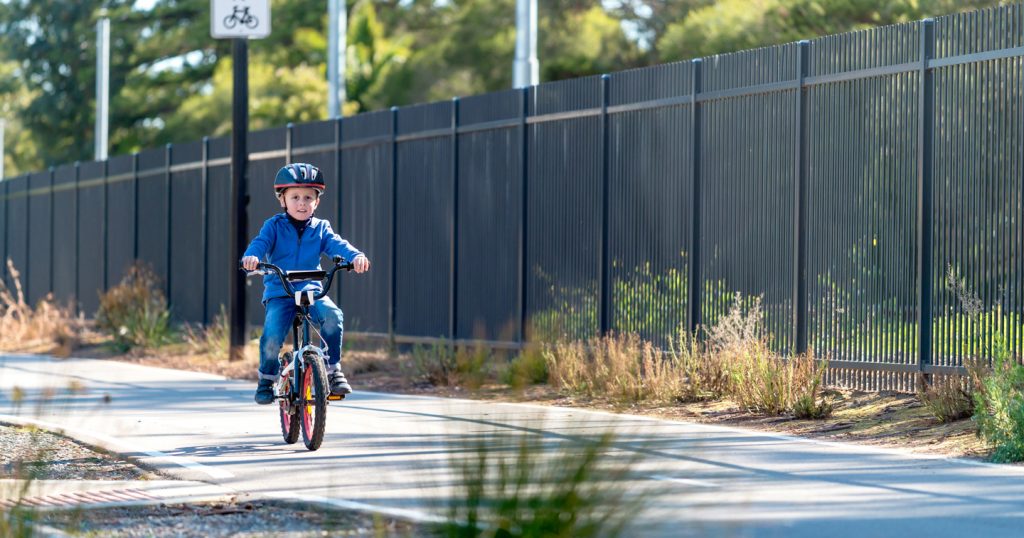Child Booster Seats Now Required By Law
Author(s): Wendy Moore Mandel
September 1, 2005
In Canada, car accidents are the leading cause of death and serious injury among small children. According to Transport Canada, 10,000 children age twelve and under are injured or killed in car accidents every year.
The Canada Safety Council reports that the use of child car restraints can prevent seventy percent (70%) of automobile crash-related deaths and serious injuries.
Unfortunately, despite the evidence of enhanced child safety with the use of child car restraints, the Canada Safety Council also reports that roadside checks of child car restraints reveal that less than fifty-two percent (52%) of our children are seat-belted at all and almost seventy-five percent (75%) are not restrained properly.
Transport Canada says there are four stages for properly securing children in motor vehicles:
- A rear-facing seat from birth until around age one (1) in an infant car seat
- A forward-facing child seat from 10 kilograms to 18 kilograms (from age 1 to age 4)
- A booster seat from 18 kilograms (from age 4 to age 8)
- A seat belt in a rear seat from 27 kilograms
Child seats have been mandatory in Ontario since the 1980s, but as of September 1, 2005, parents, grandparents, babysitters or any adults who carry children in a car must have forward-facing booster seats for children who have outgrown child car seats.
Prior to September 1, 2005, children over 18 kilograms (40 pounds) were only required to wear an adult seat belt. However, children who weigh between 18 and 36 kilograms (40 – 80 lbs.) are too big for child car seats, but not big enough to be properly protected by an adult seat belt.
The New Law – Bill 73
The government of Ontario introduced Bill 73 – The Highway Traffic Statute Law Amendment Act (Child and Youth Safety) 2004, which was passed into law on December 9, 2004.
One of the targets of Bill 73 is the mandatory and proper use of child car restraints – including car seats and booster seats. The new law, which went into effect September 1, 2005, makes it mandatory for anyone transporting children to make sure children are properly secured in either an infant seat, child seat, or booster seat. According to the present law:
- Rear-facing infant car seats are required for infants weighing 9kg (20 lbs.)or less
- Forward-facing child car seats with a tether strap to better anchor the seat, must be used to secure children weighing between 9kg and 18 kg (20 to 40 lbs.)
- Booster seats are mandatory for children under the age of eight (8), weighing more than 18 kg but less than 36 kg (40 – 80 lbs.) and who stand less than 145 cm (4 feet 9 inches) tall
- A child can start using a seatbelt alone provided any one of the following is met:
- The child turns age eight (8), or
- The child weighs 36 kg (80 lbs.), or
- The child is 145 cm tall (4 feet 9 inches)
When a child can sit against the vehicle’s back seat, with legs bent comfortably over the edge of the seat and the shoulder belt flat across their shoulder and chest, the child can be protected by an adult seatbelt.
Parents, caregivers, grandparents and babysitters can be punished for not using proper child car restraints in vehicles. Drivers are responsible for ensuring passengers under age sixteen (16) are properly secured. Anyone convicted of not using child car restraints, or using them improperly, will be given two demerit points and a $90 fine plus a $20 victim fine surcharge.
There are specific exemptions for taxis, public vehicles, buses, emergency vehicles, vehicles on short-term lease and out-of-province drivers.
In addition, effective September 1, 2005, the government no longer collects Provincial Sales Tax (PST) on booster seats. Child and infant car seats are already PST-exempt.
Parents, grandparents and caregivers are encouraged to get more information about how to use booster seats and how to properly install infant car seats, child car seats and booster seats by attending a child car seat inspection clinic in their area. Details about upcoming clinics in the Greater Toronto Area can be found at www.mto.gov.on.ca. To find a clinic anywhere in Ontario, call your local police department or public health unit. St. John’s Ambulance also hosts many clinics; clinic details can be found at www.sja.ca. Buckle-up!
Share this





